Rock stars Mike Portnoy, Philip Bynoe and Pete Thorn help steelpan rocker Tracy Thornton create a fitting tribute to Rush with 40 steelpan players.
It’s been said that the stakes are always higher and less believable in sequels. In movies, that’s often the case. In real life, not so much — but there are exceptions.
In May of 2017, pannist and Pan Rocks creator Tracy Thornton was joined in Los Angeles, Calif. by over 30 steelpan players from all over North America, plus three rocks stars and a famous producer to put on Pan Rocks L.A. The recording session featured this massive ensemble performing such recognizable rock hits as “Detroit Rock City” by Kiss (featuring Bruce Kulick on guitar), “Kashmir” by Led Zeppelin, and “Been Caught Stealing,” featuring Jane’s Addiction drummer Stephen Perkins.
After the success of that project, which included a successful documentary and thousands of views on YouTube, Thornton knew he had to capitalize on its success with a powerful follow-up project. He discussed different options with Pan Rocks L.A. producer, Matt Starr, and they came up with an idea: Pan Rocks Rush. The project would need even more pan players, more challenging music and a different lineup of rock stars to surpass the first project. Thornton knew he had his work cut out for him.
“Everything seemed harder. You know it’s the sequel, the next level and you think you’re ready for it but you’re not,” said Thornton.
Early Planning
After finishing Pan Rocks L.A., Thornton took a trip out to visit Starr in Las Vegas where he was doing a show. “He congratulated me on my work ethic and being able to keep my composure with people that make millions of records. Then he asked if I wanted to do another one. I said yes. He said, ‘What do you think about Rush?’ I said, ‘Of course I’d want to do Rush!’ Then I was thinking, man are there any pan players who like Rush? I had no idea,” Thornton said. “This was also the first project I’d done where I didn’t have things set up. The first Pan Rocks L.A. session, I had those charts written. This one I was like, ‘I can’t write charts. I need two Rush geeks to help me. That’s where Stephen Lawhorne and Seth Kilborn come in.”
Both Lawhorne and Kilborn are music educators from Michigan who run successful steelband programs. Kilbourne is the band director at Roscommon High School in Roscommon, Mich. He’s had previous experience arranging Rush for steelband hen he had his band perform Vital Signs for a concert. Lawhorne is director of music at St. Louis High School in St. Louis, Mich. and also puts on a steelband festival each year called the Saint Louis High School Festival of Steel. Last year’s event featured Tracy Thornton and Tyler Swick, who helped the bands perform material from Pan Rocks. For Lawhorne, this was a chance to take his past work with Thornton and Pan Rocks to the next level. But it almost didn’t happen.
“I asked my superintendent for the original Pan Rocks to take personal business day off. She emailed me back and said they were short on subs and it was a logistical risk. A couple of days before the trip she emailed me back and said she made a mistake and asked if it was too late for me to go on the trip and it worked out,” Lawhorne said. “This one I felt better about arranging because of the arrangements I’ve produced for my kids. It’s sharpened my arranging skills for sure.”
Lawhorne and Kilborn immediately agreed to come on board. Their arranging process consisted of Thornton recording the melody for each song in his private studio, sending to them to add to the arrangements and develop with bass lines from Rush charts they had purchased and listening to Rush performances on YouTube. Kilborn handled YYZ while Lawhorne arranged the other two songs and all three collaborated throughout the process to fine tune each chart.
Real Challenges
The next step was to find the musicians. Knowing that Rush drummer Neil Peart had retired and was therefore unavailable, there was one name that came to mind immediately for both Thornton and Starr: Mike Portnoy, formerly of world famous progressive metal band, Dream Theater. To their surprise, Portnoy signed on immediately after being asked.
“I couldn’t believe it. I thought, ‘No matter who else signs on, we got him. Next, Matt asked me who else I wanted. I said, ‘Steve Vai and Les Claypool.’ We worked our asses off to get those guys. It never happened. Steve upfront didn’t have the schedule,” Thornton said. “With the first Pan Rocks session, logistically, we had the studio locked down. We had Billy Sheehan locked down. This time, everything seemed harder. It was the next level. It took a couple months for things to start to happen.”
Unable to acquire Vai and Claypool, Thornton turned his sights to famed rock guitarist Pete Thorn, who’s toured with Chris Cornell and Melissa Ethridge, among others. The final slot went to bassist, Philip Bynoe, known for his precision style from playing with legendary guitarist Steve Vai. With the band locked, and things running smoothly at this point, it seemed only appropriate that Thornton would be thrown his first major curveball of the project.
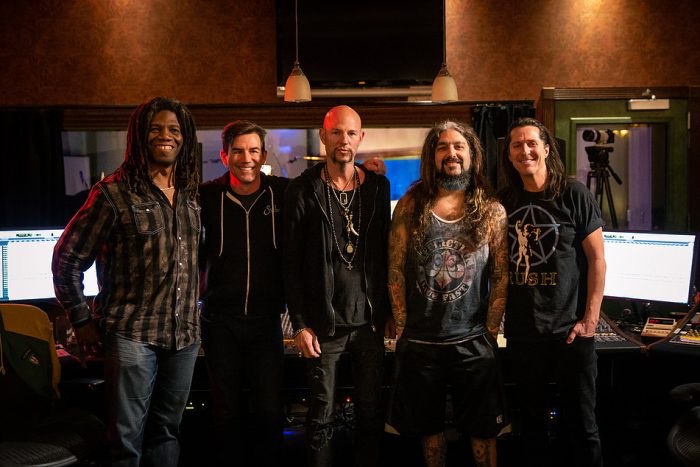
According to Thornton, the day after the press release was launched, Greg from Ocean Studios Burbank calls to inform Thornton that the studio won’t be available for the recording session due to a grounding issue and the owners may have to close for good. “At this time, players were already booking their trips out. This time we had 40 players because I thought we would get Ocean. I was on the East Coast trying to find a new studio on the West Coast. A couple studios said no, they didn’t want to host a 40-piece steel orchestra.”
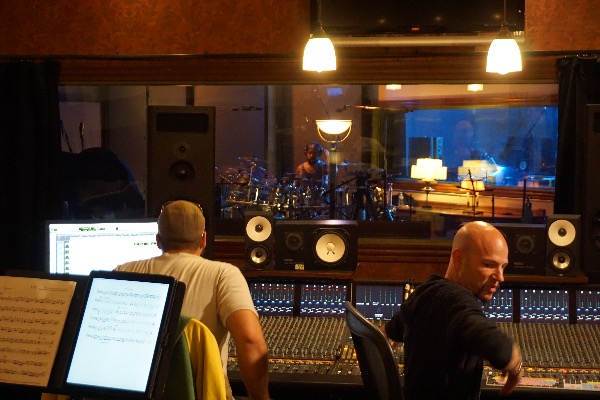
Just when things seemed darkest, Thornton received a call from someone at El Dorado studios, about a block away from Ocean Studios. The call came as a result of a chance encounter with a woman from another studio who had spread the word about Thornton’s situation. With his reputation preceding him, Thornton now had a hot lead on a studio that wanted his project.
“Two weeks before we had to do the session, we booked El Dorado. We wouldn’t have fit if I hadn’t lost three double second players. Then we lost a couple tenor players,” Thornton said. “As much as I hated losing them, that gave us the space to fit in that room. We got everybody in the same room except the basses. We were close but I was excited about it. Sound-wise it might not have been ideal, but vibe-wise, it worked.”
The First Night
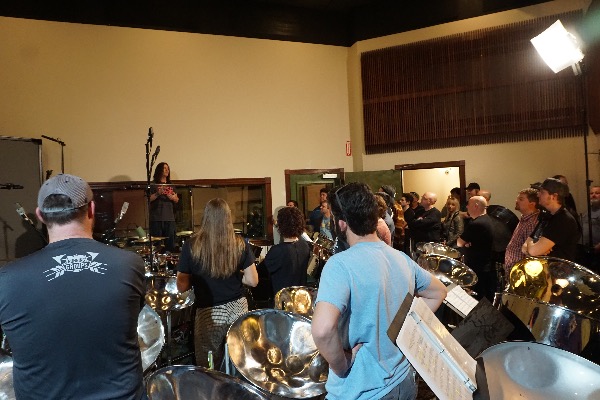
As players streamed into town from all over North America and began to set up in the studio, it became clear that despite the space issue, this was the right place for the session. Much like the year before, excitement permeated the room. Players greeted each other like old friends at a high school reunion, some familiar, some not. Each person represented a different element of the steelpan world.
There were the Canadian players who had their own cheerful style and flare, pan tuner Glenn Rowsey who drove his VW bus all the way from Morgantown, W.V. to participate, and Greg “Sparky” Sparks, the stern yet down-to-earth steelpan educator from Bakersfield, and his wife Candi, a professional photographer, who donated their services for the event. For Sparky, getting to witness a drummer like Portnoy in this setting was especially meaningful given his own background as a drummer and educator.
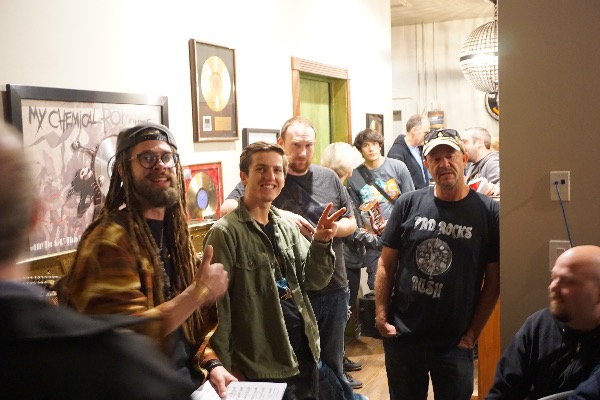
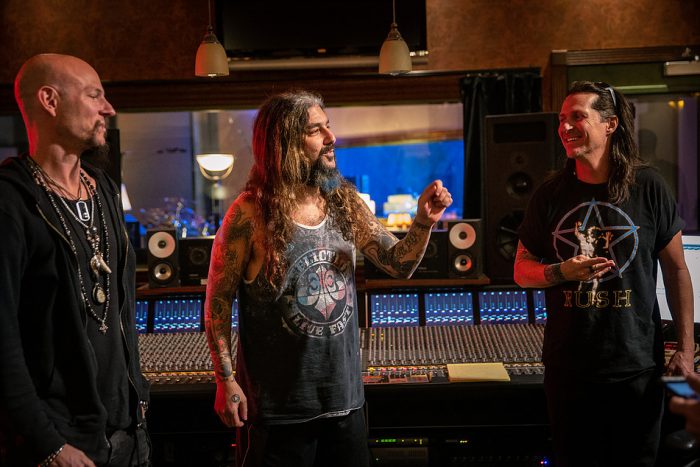
“The hi-hat work he’s doing between his grooves is just incredible. He’s doing that while keeping that pocket. Drummers always struggle with those orientations. It’s just really smooth,” Greg Sparks said.
As the rock stars came into the room to rehearse, it became apparent that Thornton had chosen the right players for the job. The first run-through began with Thornton on drums as Portnoy would be late due to another engagement that night. But when Bynoe and Thorn first ran the tune, their faces lit up like Christmas. It’s not every day that two professional rock musicians get to jam with a full steel orchestra.
“The coolest thing for me that first night was I got to play Portnoy’s drums while you guys ran the songs a couple of times. For me, being selfish, that was cool,” Thornton said. “On that first rehearsal night when we ran through the first tune, Tom Sawyer, we played it as a group like we’d played it for a year, I was like, ‘Are you freaking kidding me?’”
Then entered Portnoy.
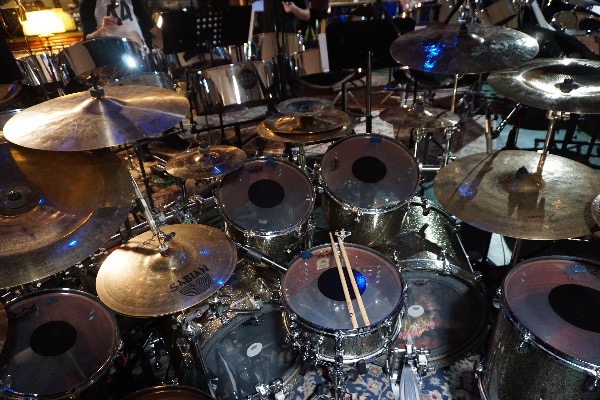
“When Portnoy came in the room, just like when Tracii Guns did, you saw his eyes, it was killer. For one, there’s a good vibe, but it re-enforces the notion that you know you’re doing something that’s cool as shit and people just don’t know it yet,” Thornton said.
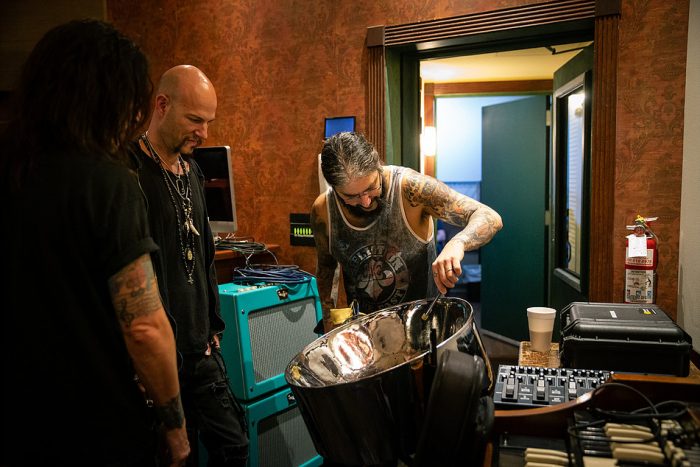
As the band powered through each song, it became apparent that everyone had prepared the material appropriately as all three songs were effectively ready to record. The next step was getting the three rock star players to record the tracks first as a baseline, while the pan players waited for them to be complete. That would prove to be a challenge of its own.
The Waiting Game
One of the most challenging elements of any recording session is knowing how to plan your attack. Not every player will get through their takes perfectly every time and each song might take more work than the next. Despite the expert level of musicianship that took place at the studio during this session, there was no knowing how long it might take for the rock trio of Portnoy, Bynoe and Thorn to get through the tunes. Each member of the massive steel ensemble waited around in different places near the studio (some wandering the halls of a local IKEA), getting text message updates as the day drew on.
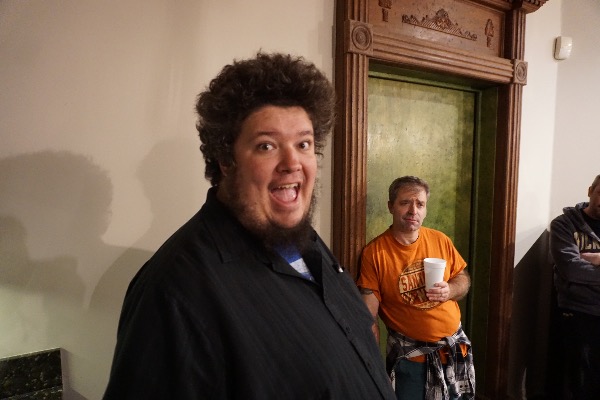
Soon enough, an afternoon call time became later afternoon, stretched to early evening and finally turned into the following day due to the difficulty of the songs, along with some producer-led elements that needed tweaking.
Eventually, the trio finished the tracks and it was time for the band to hop behind their pans for the recording session. There was just one setback: the headphones weren’t working. That meant an all-night shift for the sound crew, trying to figure out and fix the problem. Luckily, the sound engineers, led by chief engineer and producer Phil English, were professional and fixed the issue, despite losing sleep and staying at the studio overnight. “That was the biggest stress outside of the engineers. As soon as we set up everything, the headphone system blows. They stayed all night, didn’t shower, and worked all day. They were apologizing to me and I felt terrible,” Thornton said.
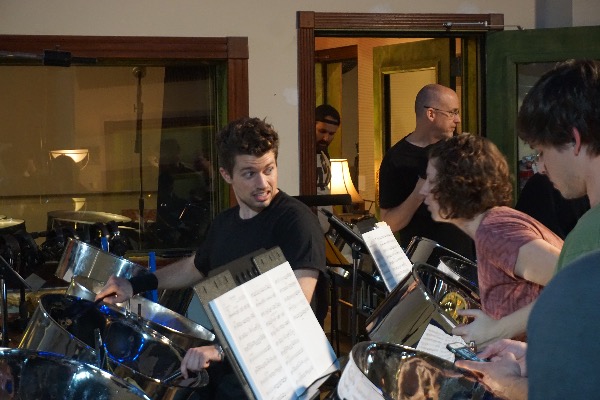
“Once we arrived in the morning, we were like, ‘Sweet they fixed the headphones. Are they gonna blow again?’ That’s happening in real time. Then we start to record Tom Sawyer. We thought it was gonna be easy. But Matt wanted to record it part by part. Then we’re changing notes. There a couple of newbies in the room who didn’t know how this works, chiming in to comment. It was hard for some people,” Thornton explained. “It took three hours. With the limited space, people were stuck behind their pans. The tenor players had to work the most. They were behind their instruments the whole time. It wasn’t until we played through Tom Sawyer and nailed it that we knew we were going to be fine. Then we did YYZ and nailed it. I thought that Spirit of Radio would be the hardest one and we’d be there until 2 o’clock in the morning. But we went through that pretty fast. It was just like the previous year when the pan players made it through and saved the day.”
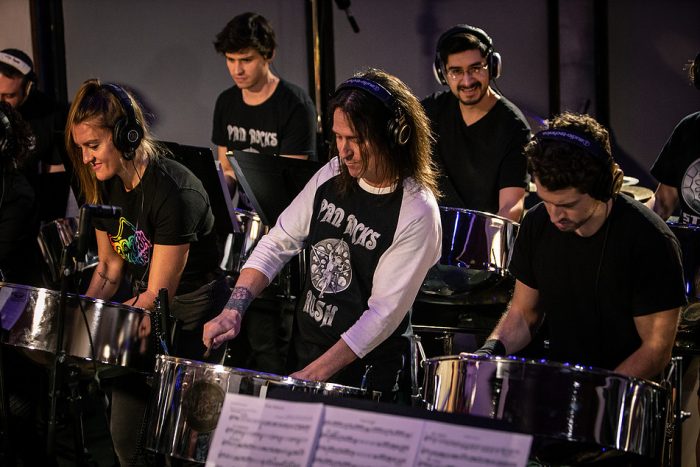
One of the hardest tunes to play was Spirit of Radio, which had one part that was recorded one way by Rush but played differently almost every time they performed it during their career. That meant, the group had to find a way to make all parts line up with one lick that did not land exactly on a particular beat. “Three guys played that tune for 40 years. Now we’re trying to get 40 people to play that tune in three sessions. It’s madness but it works,” said arranger Lahorne.
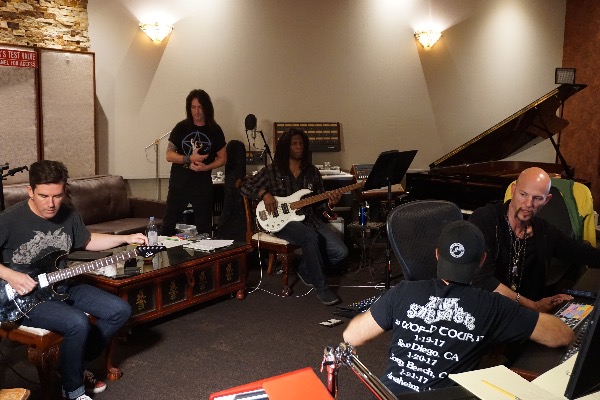
After the pan players finished their parts, they all gathered in the sound booth to listen to what they had recorded. Just as the engineer pressed play on the first track, the power shut off. It was a scary moment that was made even scarier by the fact that pannist and performer Tyler Swick recorded the moment on Facebook Live for the world to see. Luckily, it was a minor setback that was resolved quickly by the engineers.
Despite all the stress generated from malfunctioning equipment, longer-than-expected takes and last-minute adjustments to songs by the pan players, everything ended up running smoothly, to everyone’s surprise.
“The professors that wrote out the charts did a great job and the guys and gals that played it crushed it,” said Matt Starr. “Those two-and-a-half days could not have worked without everybody being so prepared.”
Legacy of Rock
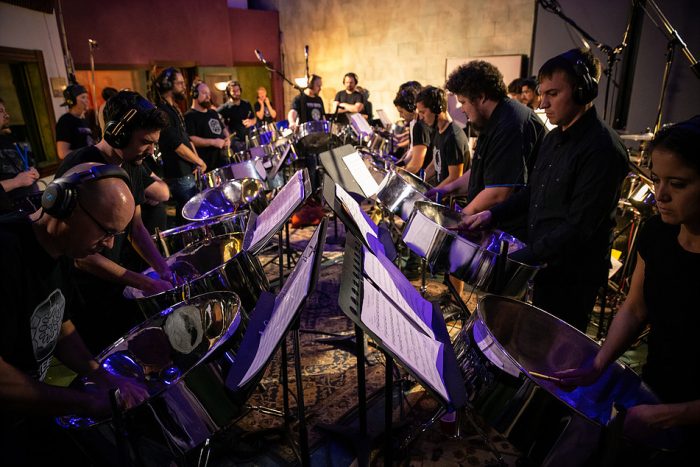
Over a year later, the project has been viewed over 500,000 times collectively on YouTube, Facebook and Instagram, thanks largely to the following of Mike Portnoy. With the recent September 2019 release of “Pan Rocks RUSH! The Documentary”, even more people are now able to get an inside glimpse at what went down in Burbank that fateful weekend. Those who partook, including Thornton, had lots to say on the enduring legacy that this event had on them.
“I can’t say enough out the pan players. Their spirit, their personality, their dedication, and their willingness to be apart of something like this,” Thornton said.
“I thought it was awesome. I was really impressed with all the pan players and ability to show up on the spot and just play with people they may or may not have played with before,” said Tyler Hunt, who played tenor pan on the session. “We were able to come together as a random assortment of people and just threw down right on the spot and have it sound pretty good. To have people adapt quickly to changing parts and to different circumstances than they anticipated and for everyone to have such a great team attitude and vibe even though we don’t really know each other, I think that’s what impressed me the most.”
“It’s rare that you can find a band of three, four, five people that can immediately connect, but to do it with a room full of 40 people and immediately be locked and tight and feeling with an energy like that, it’s unheard of. Actually, it’s pretty incredible,” Mike Portnoy said.
Learn more about the project through the videos below and at www.panrocks.com. The Pan Rocks RUSH! EP is available on major streaming services, including Spotify and Apple Music.

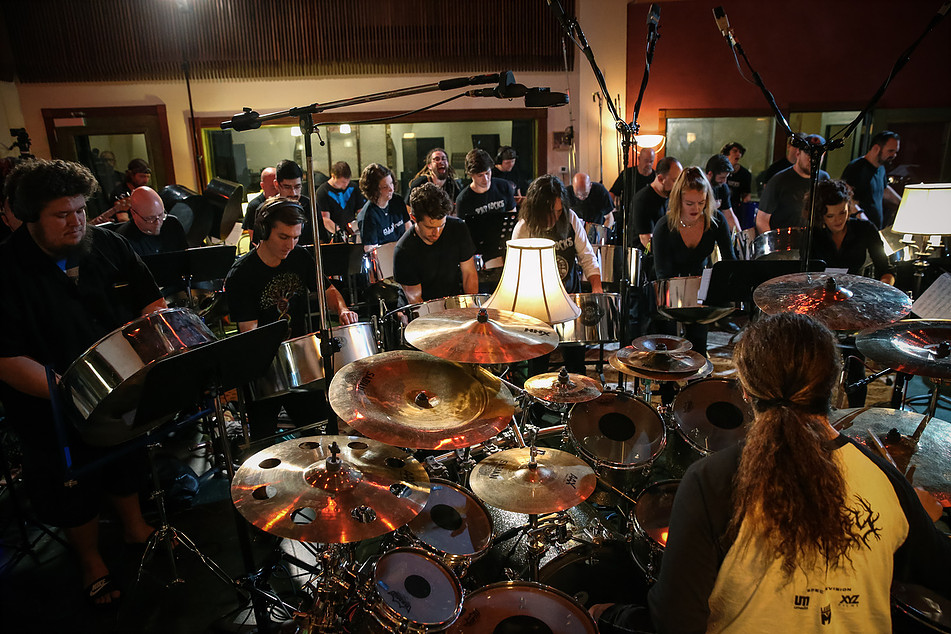
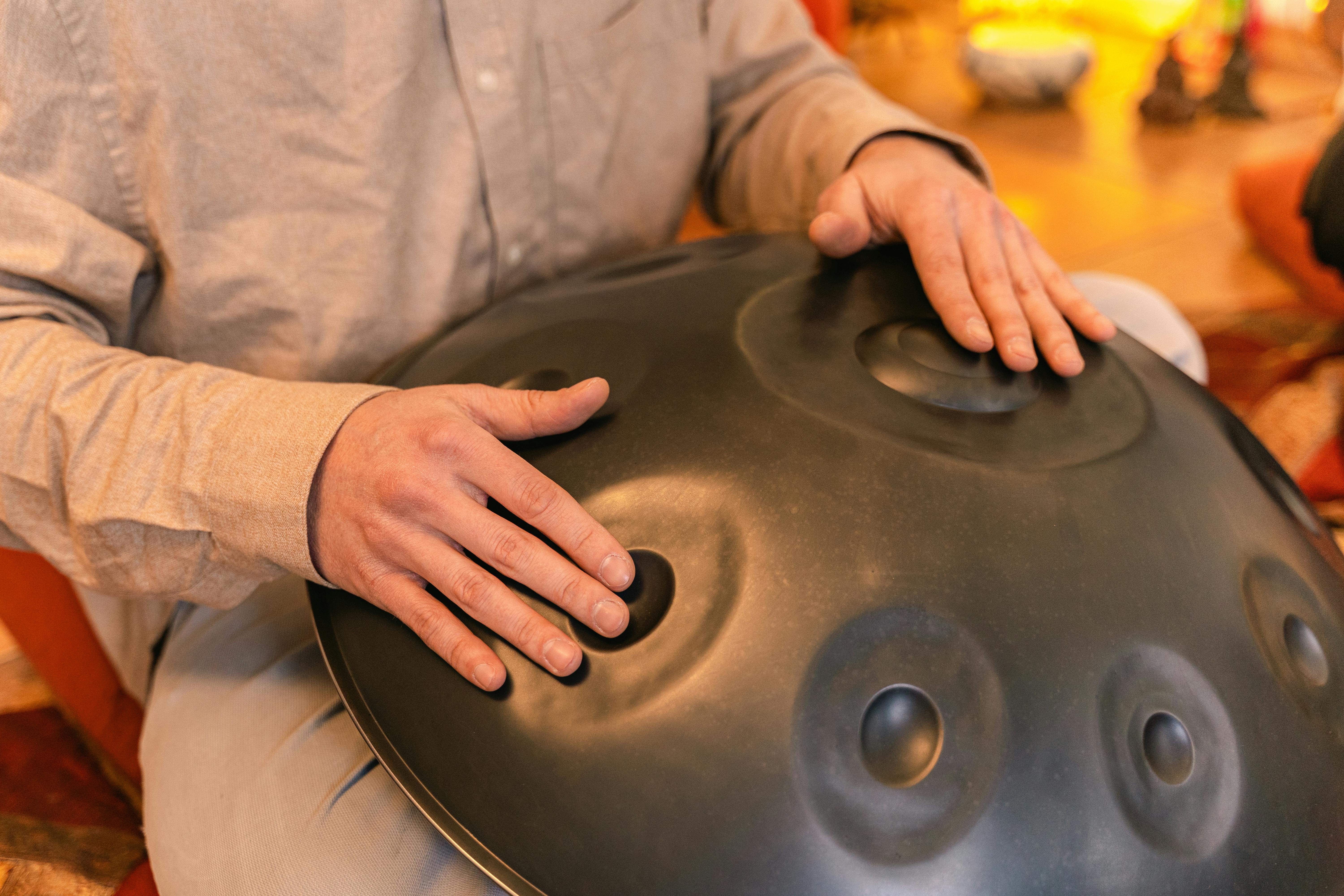






[…] Learn more about Pan Rocks Rush! here. […]